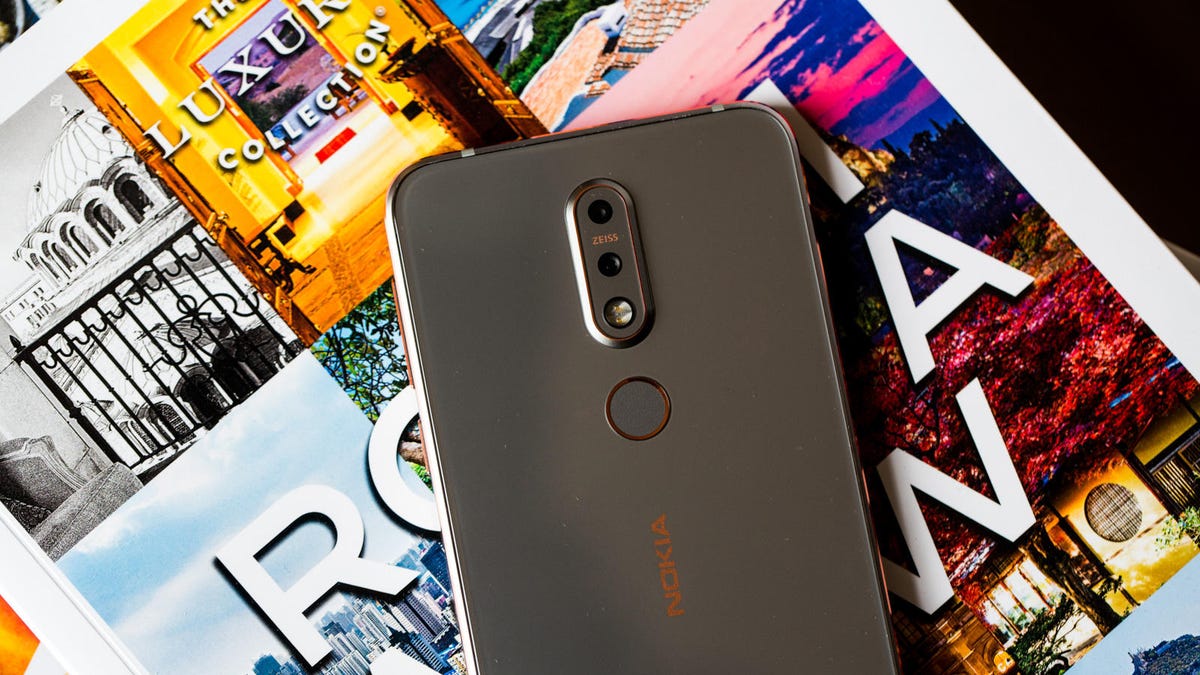Midrange phones are boring, but here's why they're important, too
Midtier handsets account for one-third of the global smartphone market, according to one analyst firm.

Google will announce the Pixel 3 and 3 XL on Tuesday, two more in a wave of premium phones hoping to sweep up buyers ahead of the holiday season and beyond. But as we ooh and ahh over the iPhone XS and Note 9, and yes, the LG V40 and Pixels as well, it's important to remember that not every phone worth buying has to cost you $1,000 or unlock the screen with your face.
Midrange phones like the $350 Nokia 7.1 and $480 Moto Z3 seem bland compared to these top-tier treasures, but they serve an important purpose to more people than you think. Although they don't have the most exciting specs or memorable names, these midtier handsets are necessary to bridge the divide between ultracheap, entry-level devices with basic specs and these specimens of peak performance. Midrange phones give most people what they actually need in a mobile device at a far more reasonable cost.
This category of devices accounts for almost a third of phone sales worldwide, according to IHS Markit. The analyst firm considers midrange phones to be priced between $150 and $399. (My own definition settles at $300 to $600.) In developing nations and countries like China, midrange phones provide solid, reliable performance for a fraction of the price of superpremium models, which is important in cost-conscious markets, or countries where prices mount from high taxes and tariffs.
In mature markets such as the US, where midrange phones make up 10 percent of smartphone sales or less, according to IHS Markit, midtier handsets still fulfill a role. If you lose or break your phone, but still need to pay your monthly carrier fee, you might buy a cheaper, unlocked device from Amazon , Best Buy , NewEgg or manufacturer websites as a stop-gap until you fulfill your contract obligation.
Midrange phones are also a good choice for teens who are prone to losing or breaking their devices, or for folks who aren't entranced by next-generation features.
At the higher end of the scale, the OnePlus 6T, which will cost $550 when it's announced this fall, is expected to carry on the brand's track record of bringing in high-end, near-premium features for almost half off the major known brands. The OnePlus 6 , for example, has the same current-generation Qualcomm Snapdragon 845 processor as the Galaxy S9 , Note 9 and LG V40, takes excellent photos, has up-to-date Android and all the rest.
Caught between the whizzbang pizzazz of the $1,000 iPhone XS and Note 9 and the jaw-dropping value of a $250 budget buy, it's easy to pass up phones with prices and features in between. Why? Because frankly, they seem too boring to notice. They have no story. It's a lot harder to sell a $400 phone with an an OK screen, perfectly fine camera, ho-hum battery life and totally functional processor than it is to sell something cutting-edge or really cheap. Cutting-edge has sizzle. Bargain buys save you cash.
If you're the type of mobile photographer to fine-tune manual settings or print photos from your phone, by all means, pinpoint which high-end phone will bring you the best camera system for what you want to do. But if you rarely stray past sharing photos through social media or text, and Instagram is a small part of your life, maybe a decent camera on a decent phone will take care of your needs just fine.
Midrange phones facing decline?
For some, there are signs that the middle zone of the midrange category could ebb. When it pulled the iPhone SE from its online store in September, Apple quit the midrange market for new phones (you still have the iPhone 7 and 7 Plus at $440 and $569, respectively). That move may be a harbinger of greater industry change.
You can't buy the adorable iPhone SE from Apple's store anymore.
"[Apple seems] to have made a conscious decision to vacate that space," said Wayne Lam, principal analyst at IHS Markit. "They want to operate and compete at the higher end of the smartphone category. Now with the global market for new phones slowing, this may be the best business model moving forward."
Be that as it may, there's still a global demand for midprice phones to lessen the sting of more expensive high-end models.
As the price of high-end phones balloons to $1,000 or more, a less-fancy phone that saves you hundreds could begin to have greater appeal. So what if it doesn't have waterproofing, five rear cameras or wireless charging?
As long as its camera and battery life are good enough for you, and it lets you keep in touch with the world, a "boring" phone will keep more money in your pocket without compromising too much where it counts. And you'll still have $500 or so left over to spend on whatever you want.
First published Oct. 6, 5 a.m. PT.
Updated Oct. 9 at 3:00 a.m. PT: Adds further detail.
Read now: iPhone XS vs. Note 9: What a $1,000 phone buys you
Read next: How to buy a new phone right now

